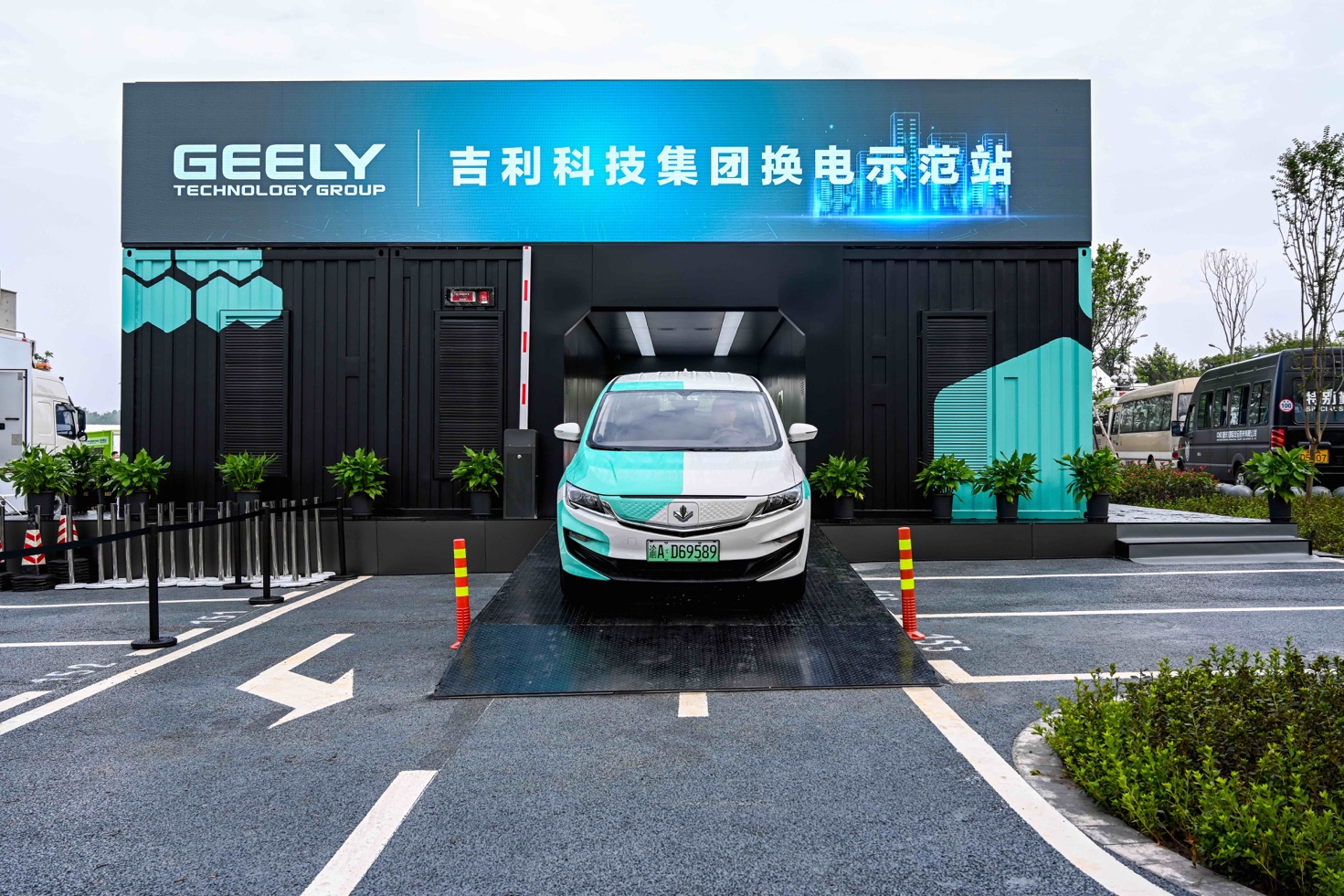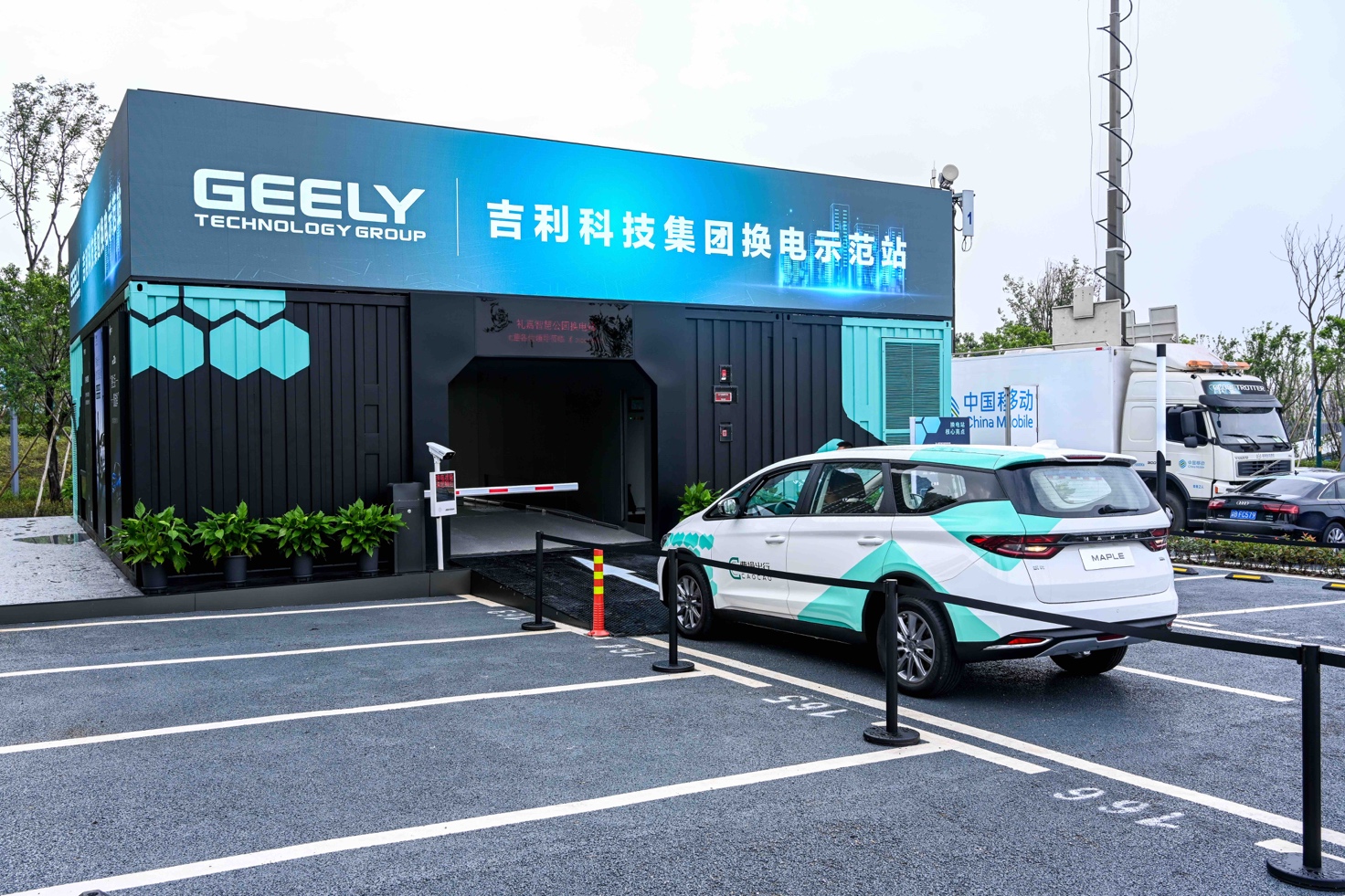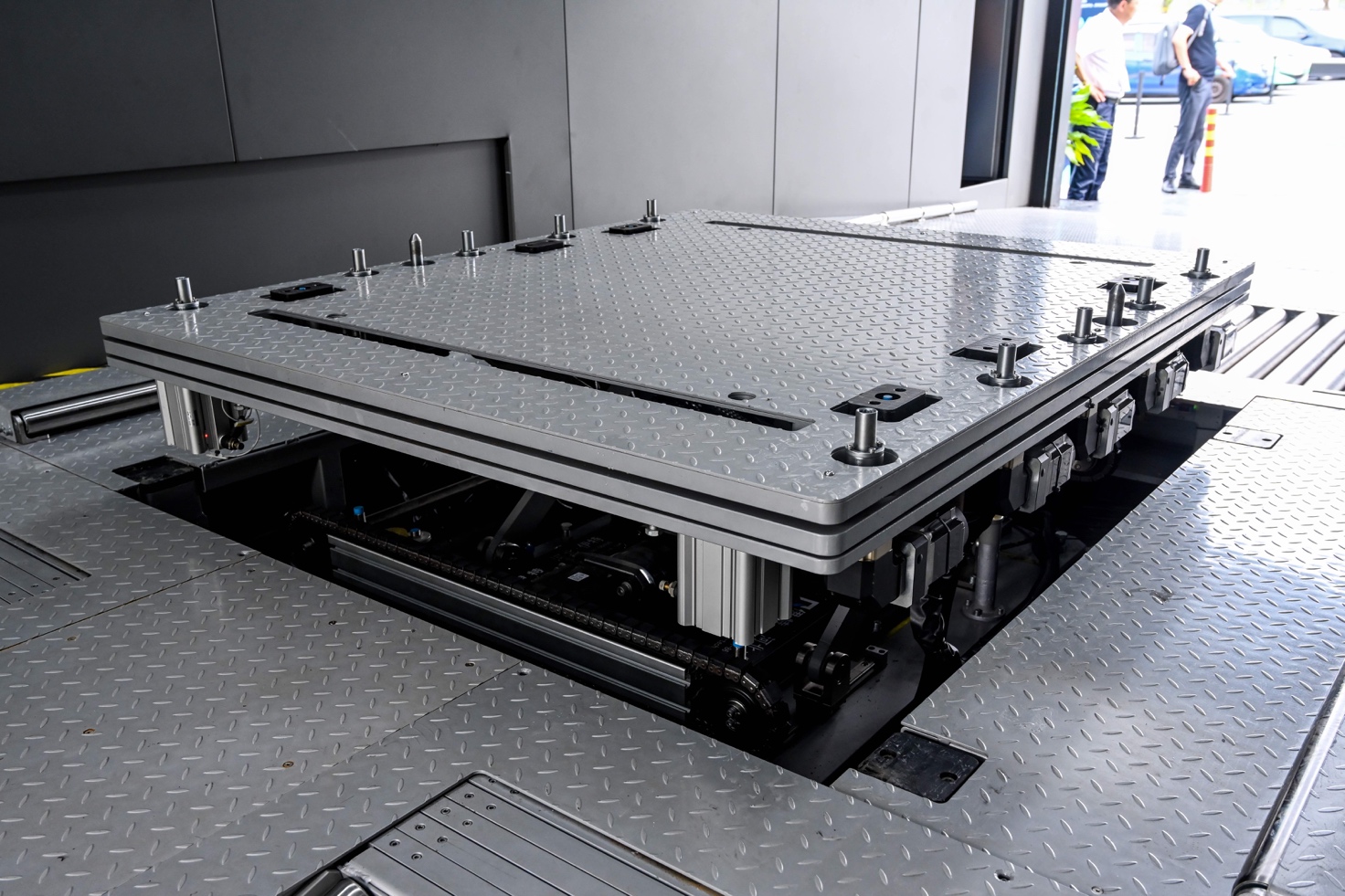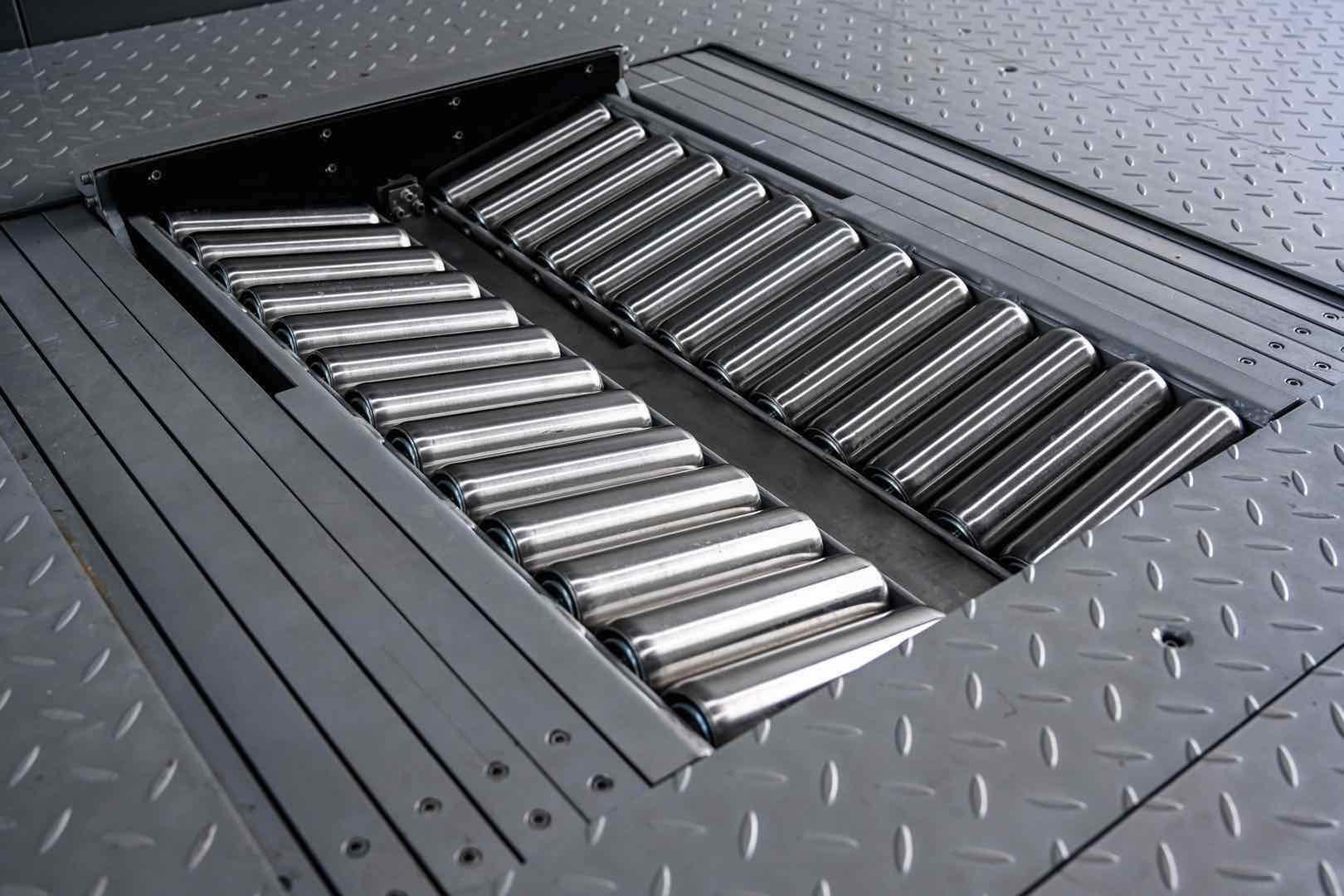In and out in 90 seconds, Geely takes an innovative step forward in promoting the adoption of electric mobility with modular battery swap stations.
The future is electric, but unfortunately the road to that future is still filled with barriers. To accelerate the mass adoption of pure electric mobility, the issues of electric vehicle cost, range, and convenience must be tackled. Today, battery cost remains the most expensive part of any electric vehicle. The most optimistic forecast today for when battery electric vehicles (BEV) will reach retail prices similar to traditional internal combustion engine (ICE) vehicles is still 2030. Even when prices are competitive without subsidies, limitations in infrastructure will continue to act as a barrier for demand.
In an effort to break down some of these barriers, Geely has spent the last three years developing its own battery swapping infrastructure technology. This month, Geely Technology Group unveiled modular battery swapping stations in the Chinese provinces of Chongqing and Shandong. In this pilot city for its battery swapping technology, Geely has established battery swapping stations in 39 locations, with plans to expand to 200 locations by 2023. Furthermore, agreements have already been signed to establish more of these swapping stations in 1,000 locations throughout China.
The 126 sq meter station can be easily set up in any location with speed enough to service over 1,000 battery-swap compatible vehicles each day. The swapping experience is similar to entering an automated car wash, during which time the station will identify compatible vehicles, swap the battery from the chassis, and handle wireless payments in one smooth autonomous process. The whole things takes roughly 90 seconds to complete.
In a separate section of the station, automated battery inspection and fast charging of depleted vehicle batteries is handled. All moving parts, including the vehicle conveyance system, battery swapping system and fast charge system have undergone over 16,000 different durability tests to give these stations a minimum service life of 10 years.
To guarantee the safety of users and the environment, a three-layer fire protection system is in place to prevent even the slightest chance of danger. Each station is also connected to an Internet of Things and Vehicles ecosystem, optimizing the operations of the battery swapping network including the rotating out of ‘unhealthy’ battery packs.
These Geely battery swapping stations open new pathways to an electrified future. With swappable batteries, the battery as a service (BAAS) business model becomes a viable option to support and encourage the adoption of EVs. Separating cost of batteries from cost of the vehicle will help make BEVs more cost competitive than ICE models sooner as well as boost BEV resale value as consumers worry less about battery degradation. In China, as well as all over the world, many apartments still live without the necessary charging facilities for electric vehicles. With these stations, the inconvenience of charging is eliminated in just 90 seconds.

To lower charge time ever-higher voltage is needed, which is not conducive for safe battery operation or preserving battery range and life. Even as charging becomes faster, it will never be as fast or efficient as refilling at a gas station. Battery swapping technology is a viable solution to many of the barriers faced in promoting the mass adoption of pure electric mobility. With the launch of Geely’s battery swap stations, the road to an electric future has just gotten shorter.






